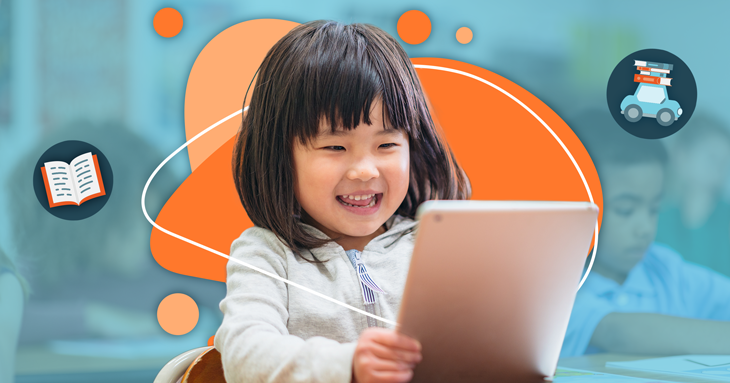
The Power of Independent Reading
The start of a new school year offers students and teachers many opportunities for independent reading. The National Council of Teachers of English define independent reading as
“a routine, protected instructional practice that occurs across all grade levels… Student choice in text is essential because it motivates, engages, and reaches a wide variety of readers. The goal of independent reading as an instructional practice is to build habitual readers with conscious reading identities.”
Independent reading will look different in a kindergarten class than it will in fourth grade, but it’s meant to be a time where teachers can cultivate a love of reading in their students.
How to Find Appropriate Books for Independent Reading
There are a vast number of benefits for students and teachers when students read independently: students get to enjoy a book they love while teachers gain the time and space to get to know their students. Students are most likely to enjoy all the benefits of independent reading when they have a selection of good books that they can engage with successfully.
Reading assessments provide a window into students’ current strengths and important information for determining the best path forward in their literacy journey. These assessments not only give teachers insight into students’ reading behaviors, but they also provide an opportunity to discover what types and levels of texts will be best to use for instruction verses independent reading time.
Instructional vs. Independent Student Reading Level
- Students’ instructional reading level is determined by several factors measured by student assessments. For Levels A–E, the only data used for determining the best level to begin instruction is the accuracy rate. Beginning at Level F, the comprehension score and the accuracy rate are used to determine the best instructional level for each student.
- Students’ independent reading level should always be only one or two levels below the level you are using with the student during small group instruction. Since students will be reading new books without your support, it is best if they are able to read the book with a high degree of accuracy (95-100%) and without any assistance.
When students are given the right level of books to read for independent reading, they are motivated to engage with the texts, knowing that their curated selection of books will be just right for them.
Benefits of Independent Reading
Engaging in independent reading allows students authentic practice applying their reading skills in a low-stakes setting. This is a time when students can practice all the skills and strategies they have been learning with a text that is self-selected and interesting to them. The more text that a student engages with, the more words and language they are likely to encounter and retain. As students read more frequently, independent of teacher support or scaffolds, their stamina begins to build. It’s important for teachers to monitor the amount of time students spend actively reading during independent reading activities.
As students begin to strengthen their stamina for independent reading, teachers benefit as well. When students are engaged in meaningful, independent reading activities, teachers are not only able to observe what students can do unassisted, but also gain valuable time to work with students one-on-one or in small groups and assess students for further instruction.
Using the Digital Reader for Independent Reading
The Digital Reader provides students with the opportunity to choose a desired topic, character, genre, etc. through their personal bookshelves. After you input a student’s instructional reading level, the Digital Reader does the rest! The Digital Reader uses that information as a guide to select the student’s independent reading level. The personalized student bookshelf will hold a collection of titles for each child that match their individual, independent reading level. When students log in to their account, they will be excited to find an entire selection of engaging titles that will be supportive and just right for them.
Independent Reading Adventures with the Digital Reader
Another exciting pathway for students to explore is Reading Adventures. Reading Adventures is a new feature designed specifically for the Digital Reader that provides students with structure and support during independent reading with an automated reading lesson tailored to each selected book. Students begin their journey with a lively word study game, followed by a video book introduction. Then they read the featured book independently before taking a quick, three-question quiz where they are asked to think about the story that they just read. These reading activities, seamlessly woven into the student’s journey, provide a greater sense of motivation during independent reading and allow the teacher to monitor student activity and progress.
Independent reading helps students build stamina, deepen comprehension of increasingly complex texts, and most of all, foster a love of reading. The Digital Reader is a high-quality asset to any educator incorporating independent reading into their classroom.

